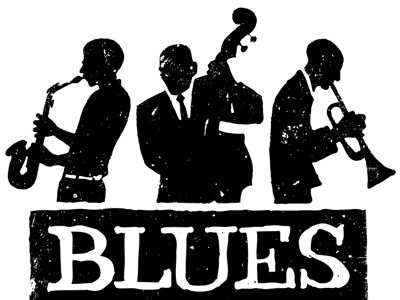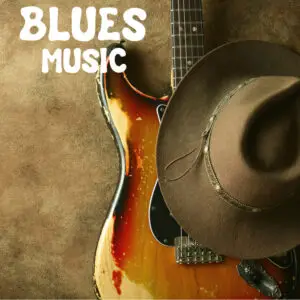What is blues music? Blues is a genre of music that originated in the African American communities of the southern United States around the end of the 19th century. The music has its roots in African musical traditions, work songs, and spirituals, and it is characterized by its distinctive 12-bar blues chord progression and the use of blues scales and notes.
Blues music often features lyrics that express themes of hardship, heartbreak, and injustice, and it has had a significant impact on the development of other musical genres, such as rock and roll, jazz, and soul music.
What is blues music?
Blues music is a genre of music that originated in the African American communities of the southern United States around the end of the 19th century. The music has its roots in African musical traditions, work songs, and spirituals, and it is characterized by its distinctive 12-bar blues chord progression and the use of blues scales and notes.
Also, blues music often features lyrics that express themes of hardship, heartbreak, and injustice, and it has had a significant impact on the development of other musical genres, such as rock and roll, jazz, and soul music.
Characteristics of blues music
Blues music is characterized by several distinctive features, including:
- 12-bar blues chord progression: The majority of blues songs are based on a 12-bar chord progression, which consists of three four-bar sections. The structure of the 12-bar blues provides a framework for the melody, lyrics, and improvisation.
- Blues scales and notes: The use of blues scales and notes, such as the flattened third, fifth, and seventh degrees of the major scale, gives blues music its distinct sound.
- Call-and-response: A common technique in blues music is call-and-response, in which a lead vocalist or instrumentalist performs a phrase, and another vocalist or instrument responds.
- Expressive vocals: Blues music is known for its emotive and expressive vocal performances, which often convey feelings of sadness, longing, and desperation.
- Lyrics: Blues lyrics often deal with themes of hardship, heartbreak, and injustice, reflecting the experiences of African Americans in the early 20th century.
- Improvisation: Blues musicians often improvise during their performances, adding their own unique style and interpretation to a song.
- Instrumentation: Traditional blues music is often performed with a small ensemble of instruments, including guitar, harmonica, bass, drums, and piano.
Different styles of blues music
Over time, blues music has evolved and developed into several different styles, each with its own distinct characteristics.
Some of the most popular styles of blues music include:
- Delta blues: Originating in the Mississippi Delta region in the early 20th century, Delta blues is known for its raw, stripped-down sound and slide guitar playing.
- Chicago blues: Developed in the 1940s and 1950s in Chicago, this style of blues is characterized by its amplified sound and use of electric guitar.
- Texas blues: Originating in the 1940s and 1950s in Texas, this style of blues features a swing-influenced rhythm and often incorporates elements of jazz and boogie-woogie.
- Piedmont blues: Developed in the southeastern United States, Piedmont blues is known for its fingerstyle guitar playing and use of ragtime and country music influences.
- British blues: In the 1960s, British musicians became interested in blues music, and British blues was born. This style of blues is known for its heavy rock and roll influence and use of amplified instruments.
- Modern blues: Today, blues music continues to evolve and incorporate new sounds and influences, with modern blues artists incorporating elements of rock, funk, soul, and other genres into their music.
Influential blues musicians
The blues is an influential genre of music that has had a lasting impact on the music industry. Here are some of the most influential blues musicians:
- Robert Johnson: Johnson is considered the “King of the Delta Blues” and is known for his unique guitar-playing style and powerful voice. He was a major influence on many blues and rock musicians.
- B. King: King is one of the most recognized and celebrated blues musicians of all time. His distinctive guitar-playing style and soulful voice have inspired countless artists.
- Muddy Waters: Waters is known for his electrified blues sound, which helped to pave the way for the development of rock and roll. He was also a mentor to many musicians, including the Rolling Stones.
- John Lee Hooker: Hooker’s raw, gritty voice and driving guitar-playing style made him a standout in the blues world. His music has been covered by countless artists.
- Howlin’ Wolf: Wolf’s powerful voice and bluesy growl made him a force to be reckoned with in the blues world. He was also known for his charismatic stage presence.
These are just a few of the many influential blues musicians who have left a lasting impact on the music industry.
The Role of African-American Culture in the Development of blues music
African-American culture played a significant role in the development of blues music. The blues emerged in the early 20th century as a genre of music that expressed the struggles and experiences of African Americans living in the rural South.
The roots of the blues can be traced back to African musical traditions, including call-and-response singing, polyrhythms, and improvisation. These elements were combined with the experiences of African Americans living under slavery and, later, Jim Crow laws and segregation.
Blues lyrics often dealt with themes of poverty, oppression, and heartbreak, reflecting the harsh realities of African American life at the time. Musicians would often sing about their personal experiences as well as those of their communities, creating a sense of shared experience among their audiences.
The blues also served as a form of cultural resistance, providing African Americans with a means of expressing themselves in a society that often denied them basic rights and freedoms. Many blues musicians became influential figures within their communities, using their music to inspire and empower others.
Over time, the blues evolved and spread throughout the United States and beyond, influencing a wide range of musical genres, including rock and roll, soul, and hip-hop. Today, the blues remain an important part of African-American culture, serving as a powerful reminder of the strength and resilience of a community that has overcome countless obstacles throughout its history.
The Significance of the Blues in American Music
The blues has played a significant role in American music and culture, influencing a wide range of musical genres and artists. The genre emerged in the early 20th century as a form of music that expressed the struggles and experiences of African Americans living in the rural South.
At the time, the blues served as a means of cultural resistance, providing African Americans with a way to express themselves in a society that often denied them basic rights and freedoms. Through their music, blues musicians shared their experiences with their audiences, creating a sense of shared identity and community.
Over time, the blues evolved and spread throughout the United States and beyond, influencing a wide range of musical genres, including jazz, rock and roll, soul, and hip-hop. Many of the greatest American musicians, including Elvis Presley, Bob Dylan, and Jimi Hendrix, were influenced by the blues.
The blues has also had a significant impact on American culture, serving as a powerful reminder of the struggles and resilience of African Americans throughout history. Today, the blues remain an important part of American music and culture, continuing to inspire and influence new generations of musicians and music lovers.
The Role of the Blues in Social and political movements
The blues has played a significant role in social and political movements throughout history, serving as a means of cultural resistance and expression for marginalized communities.
During the civil rights movement of the 1950s and 60s, the blues served as a powerful tool for African Americans to express their experiences and advocate for social justice. Musicians like Nina Simone, B.B. King, and Muddy Waters used their music to address issues of racial inequality and injustice, inspiring and empowering their audiences to fight for change.
The blues also played a role in the labor movement of the early 20th century, as workers used music to express their frustrations and advocate for better working conditions.
Songs like “Solidarity Forever” and “Which Side Are You On?” became anthems for labor activists and union organizers, inspiring workers to come together and demand better treatment from their employers.
In addition to these movements, the blues has also been used to address a variety of social and political issues, including poverty, war, and environmental degradation.
Through their music, blues musicians have provided a voice for those who are often marginalized or overlooked by society, inspiring and motivating listeners to take action and work for change.
Today, the blues continues to play a role in social and political movements, with musicians using their music to address issues like police brutality, immigration, and climate change.
The genre remains a powerful means of expression and resistance, serving as a reminder of the important role that music can play in social and political movements.
RECOMMENDED:
The impact of technology on the spread of blues music
Technology has had a significant impact on the spread of blues music, allowing the genre to reach wider audiences and connect with fans across the globe.
One of the earliest forms of technology that helped to spread the blues was the phonograph, which allowed for the recording and distribution of music on a mass scale. In the 1920s and 30s, companies like Columbia and RCA Victor began recording and releasing blues music, making it accessible to people outside of the rural South for the first time.
The rise of radio in the 1920s and 30s further helped to spread the blues, as stations began broadcasting live performances and recordings of blues musicians. This allowed fans to listen to the music from the comfort of their own homes and helped to create a sense of shared experience and community among listeners.
In the mid-20th century, the development of television brought blues music into even more homes, with shows like “American Bandstand” and “Soul Train” featuring performances by blues musicians. This helped elevate the genre’s visibility and popularity and introduced the music to new and diverse audiences.
With the advent of the internet in the late 20th century, the spread of blues music has only accelerated. Today, fans can access an incredible array of blues recordings and performances online, from vintage recordings to contemporary artists.
Social media platforms like YouTube, Twitter, and Facebook have allowed blues musicians to connect with fans in new and innovative ways, building their audiences and promoting their music.
In short, technology has played a key role in the spread and popularity of blues music, allowing the genre to reach new audiences and inspire new generations of musicians and music lovers.
Conclusion
Here you will learn about what is blue music: Blues music is a genre that emerged in the early 20th century as a means of expression and cultural resistance for African Americans living in the rural South. Through their music, blues musicians shared their experiences and struggles with their audiences, creating a sense of community and shared identity.
Over time, the blues has had a significant impact on American music and culture, influencing a wide range of genres and artists. The blues has also played a role in social and political movements, providing a means of expression and advocacy for marginalized communities.
Today, the blues remain an important part of American music and culture, continuing to inspire and influence new generations of musicians and music lovers.




